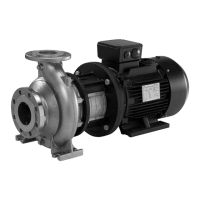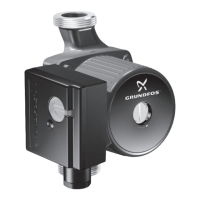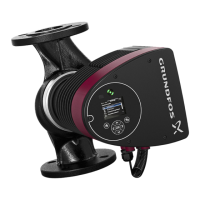English (GB)
21
Fig. 21 Rubber bellows expansion joint without
limiting rods
Expansion joints with limiting rods can be used to
reduce the effects of the expansion/contraction
forces on the pipework. We always recommend
expansion joints with limiting rods for flanges larger
than DN 100.
Anchor the pipes in such a way that they do not
stress the expansion joints and the pump. Follow the
supplier’s instructions and pass them on to advisers
or pipe installers.
Figure 22 shows an example of a metal bellows
expansion joint with limiting rods.
Fig. 22 Metal bellows expansion joint with
limiting rods
Due to the risk of rupture of the rubber bellows,
metal bellows expansion joints may be preferred at
temperatures above +100 °C combined with high
pressure.
8.9 Measuring instruments
8.9.1 Pressure gauge and mano-vacuum gauge
To ensure continuous monitoring of the operation,
we recommend installing a pressure gauge (on the
discharge side) and a mano-vacuum gauge (on the
suction side). The pressure gauge taps should only
be opened for test purposes. The measuring range
of the gauges should be 20 % above the maximum
pump discharge pressure.
When measuring with pressure gauges on the pump
flanges, it should be noted that a pressure gauge
does not register dynamic pressure (velocity
pressure). On all NB and NBG pumps, the diameters
of the suction and discharge flanges are different
which results in different flow velocities at the two
flanges. Consequently, the pressure gauge on the
discharge flange will not show the pressure stated in
the technical documentation, but a value which may
be up to 1.5 bar (approx. 15 metres) lower.
8.9.2 Ammeter
To check the motor load, we recommend connecting
an ammeter.
TM02 4981 1902TM02 4980 1902

